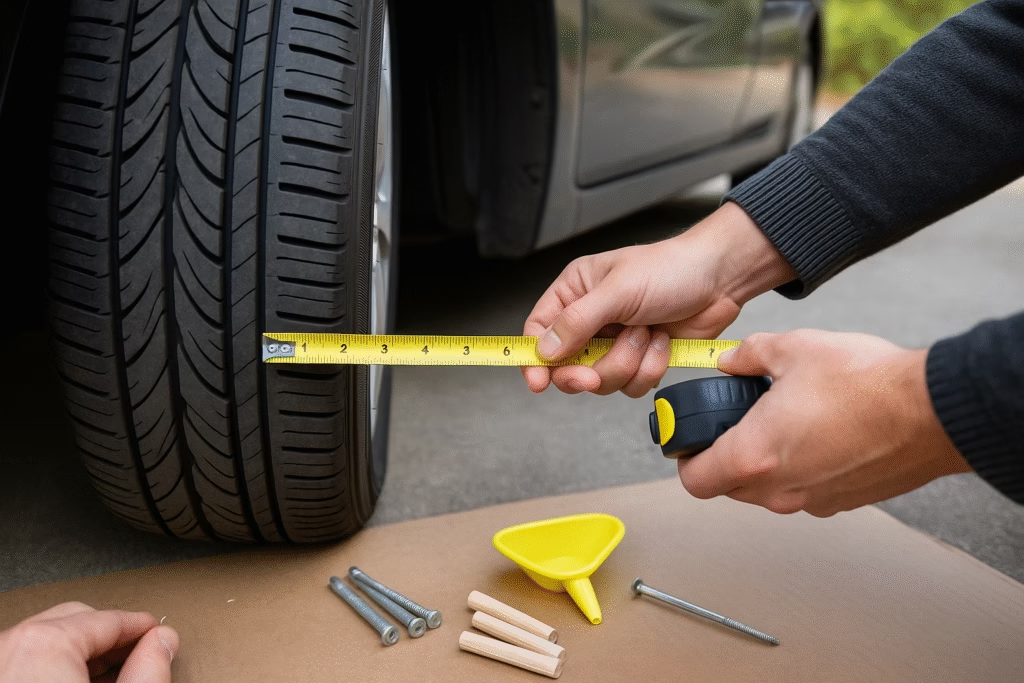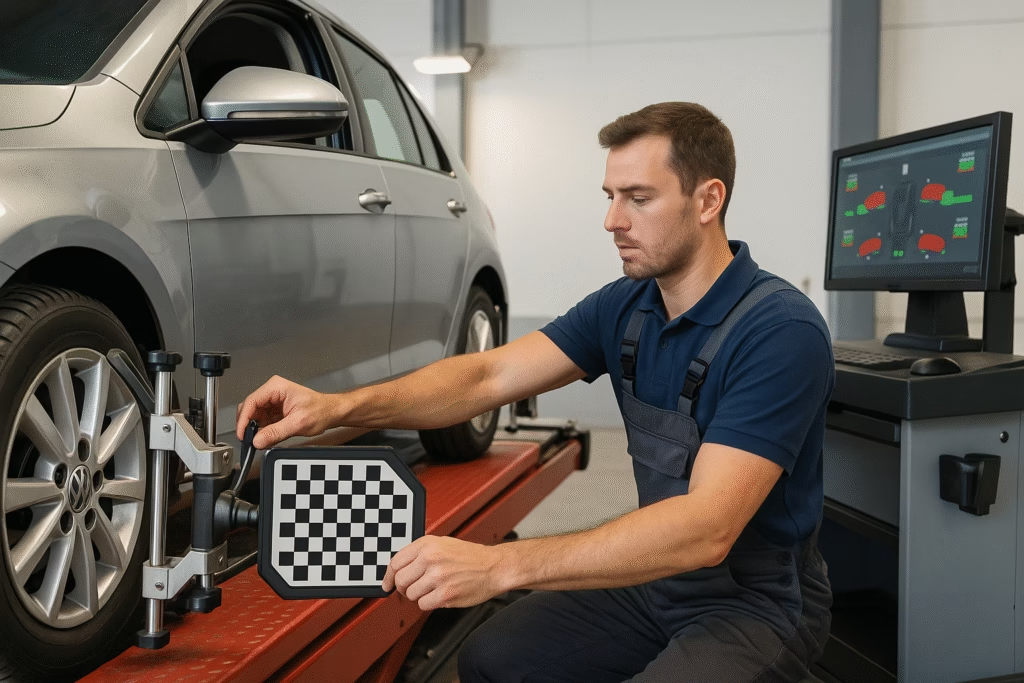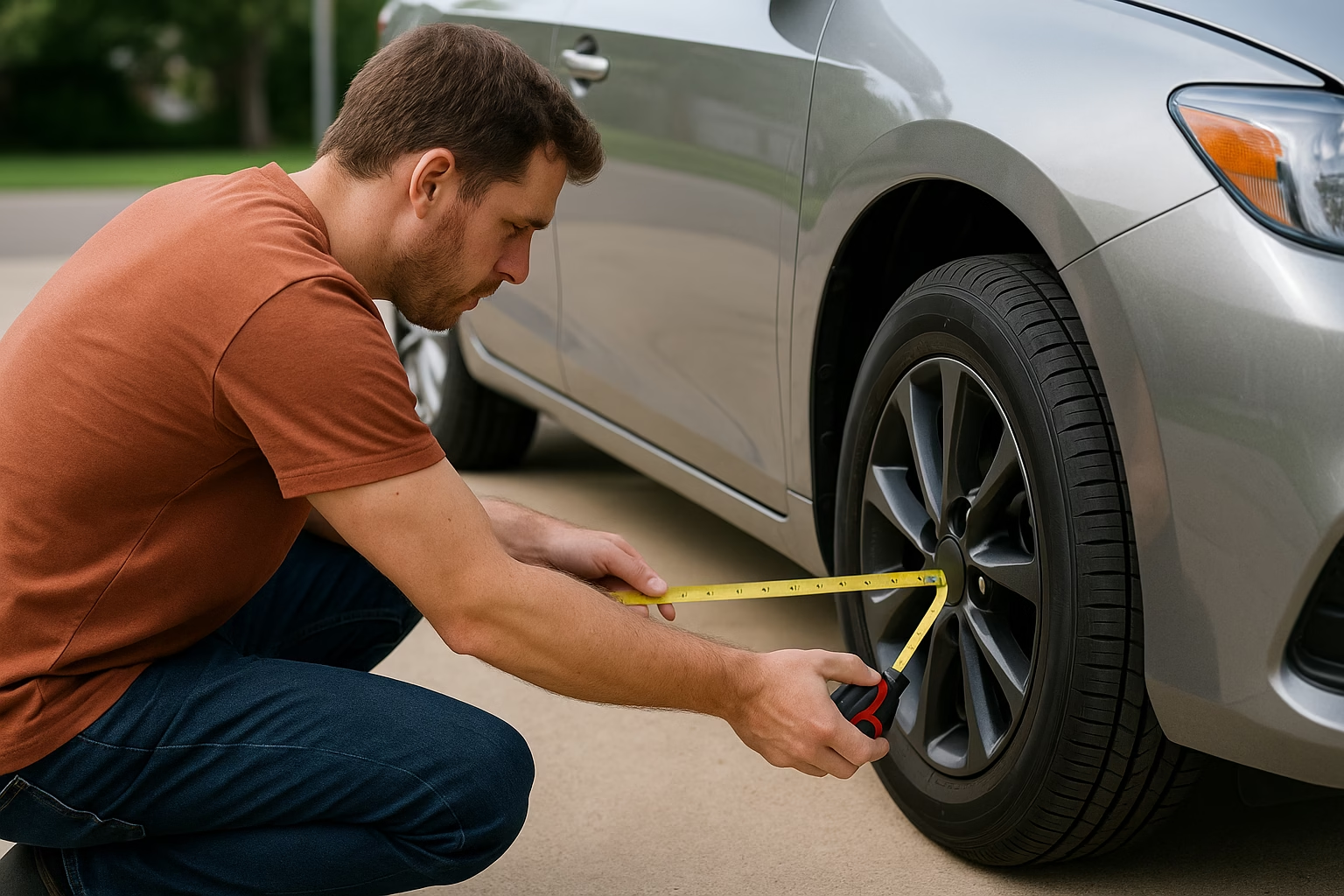How to Check Car Alignment: Why This Matters
If you want safer handling, longer tire life, and better fuel economy, you must learn how to check car alignment. Misalignment sneaks up as subtle pulls, a crooked steering wheel, or uneven tread wear that slowly eats your tires and your budget. Knowing how to check car alignment at home gives you the confidence to spot issues early and decide if a shop visit is urgent or can wait.
In this guide, we’ll show you practical, zero-jargon methods for how to check car alignment using everyday items—like a tape measure, chalk, and a flat driveway. You’ll understand toe, camber, and caster basics, plus simple tests to verify how to check car alignment after hitting a pothole or replacing suspension parts.
Whether you’re new to DIY or already wrench on weekends, mastering how to check car alignment helps you document symptoms, talk clearly with a technician, and avoid unnecessary upsells. Keep reading to learn how to check car alignment safely, what results mean, and the thresholds that indicate it’s time for professional equipment. By the end, you’ll not only know how to check car alignment—you’ll know how to act on your findings with confidence.
Before you start, park on level ground, set tire pressures to the door-jamb spec, and remove heavy cargo that can skew readings. A quick baseline photo of each tire’s tread and the steering wheel’s center position will help you compare results later and communicate clearly if you decide to book a professional alignment.
Signs & Symptoms of Car Misalignment
Learning how to check car alignment begins with recognizing the warning signs. One of the most obvious clues is uneven tire wear. If the inner or outer edges of your tires look bald while the rest of the tread remains intact, alignment is often the culprit. This happens because misaligned wheels drag instead of rolling smoothly, putting extra stress on one section of the tire. Knowing how to check car alignment early allows you to catch this issue before it shortens tire life drastically.
Another strong indicator is steering pull. If your steering wheel tugs left or right when you’re driving straight on a flat road, you need to learn how to check car alignment to confirm whether it’s alignment or another issue like tire pressure. A crooked steering wheel when you’re driving straight is also a red flag. This means the wheels aren’t pointing in the same direction, which can compromise control at higher speeds.
Vibrations at the wheel or excessive play in the steering system can also tie back to poor alignment. While these symptoms sometimes overlap with suspension or balance issues, understanding how to check car alignment ensures you don’t confuse one issue for another. It also saves you from replacing parts unnecessarily when a simple alignment adjustment could fix the problem.
Fuel efficiency is another subtle area affected by misalignment. A car working harder to overcome drag burns more fuel. By spotting these signs early and knowing how to check car alignment, you protect your tires, your wallet, and your safety. The sooner you recognize these symptoms, the sooner you can take corrective action.
Tools & Preparation for Checking Car Alignment
Before you dive into the process of how to check car alignment, it’s essential to gather the right tools and prepare your vehicle properly. While professional shops use computerized alignment racks, you can still perform meaningful checks at home with a few simple items. A flat, level surface like a garage floor or driveway is your starting point. Uneven ground can throw off your results and make it harder to see whether alignment is actually off.
The most basic tools you’ll need include a reliable tape measure, chalk or masking tape, a carpenter’s square, and a plumb line. These help you measure wheel angles and confirm whether your tires are parallel. A tire pressure gauge is also critical because uneven pressures can mimic the same symptoms as misalignment. If you don’t check this first, your results about how to check car alignment may be inaccurate.
Lighting is another overlooked preparation step. Good visibility helps you spot tire wear patterns and subtle differences in wheel angles. Keeping a camera or smartphone nearby is also wise, as photos help you document results over time. This way, when you revisit how to check car alignment after adjustments or new parts, you have a reference for comparison.
Finally, make sure your car is unloaded. Remove heavy cargo, sports gear, or tools that could shift weight unevenly. Fill your gas tank at least halfway since fuel level changes the vehicle’s stance slightly. Preparing thoroughly before you attempt how to check car alignment ensures more reliable readings and helps you avoid chasing false problems. A few minutes spent here can save hours of confusion later.

Step-by-Step: How to Check Car Alignment at Home
When it comes to how to check car alignment, having a structured process ensures you don’t miss key details. The following steps break down easy DIY methods that give you a clear picture of whether your vehicle needs professional adjustment. Each step is simple but provides valuable insights into your car’s steering and handling health.
Step 1: Visual Tire Inspection
Start by looking closely at your tire tread. Uneven wear patterns—like feathering, cupping, or bald edges—are classic signs of misalignment. Place your hand across the tread and feel for ridges or smooth spots. Knowing how to check car alignment visually helps you catch problems before they lead to dangerous blowouts or costly replacements. Take clear photos for comparison over time, especially after hitting potholes or curbs.
Step 2: Steering Wheel & Road Test
Find a quiet, flat road and drive in a straight line with your hands lightly resting on the steering wheel. If the wheel sits off-center or the car drifts without input, it’s time to review how to check car alignment more deeply. Make sure to repeat this test at different speeds. A centered steering wheel should stay level; if not, alignment angles may be out of spec. This step mimics professional testing and confirms symptoms you might notice daily.
Step 3: String or Tape Measure Method
Park your car on level ground, and run a string or tape measure along both sides of the tires to see if the front wheels point inward or outward. Measuring toe alignment is one of the most direct ways to practice how to check car alignment without advanced equipment. Record the distances at the front and rear of the tires, comparing them carefully. Even small deviations can cause steering problems and uneven tire wear if ignored.
Step 4: Plumb Line Camber Test
Hold a plumb line against the top edge of your wheel and measure the gap between the line and the bottom edge. This gives you a sense of camber angle. Although this method isn’t as precise as a shop’s machine, it still helps you understand how to check car alignment in terms of wheel tilt. A visibly leaning wheel usually requires immediate professional adjustment to protect suspension parts.
Completing these steps gives you a well-rounded idea of your alignment status. The more familiar you become with how to check car alignment, the easier it becomes to track small changes over time and decide whether to adjust or book a shop appointment.
When to Seek Professional Alignment Help
Even if you know how to check car alignment at home, some situations demand professional attention. Modern alignment involves fine-tuning three critical angles—camber, caster, and toe—using precise computerized equipment. Your DIY checks give you strong indicators, but they can’t measure down to the fractions of a degree required for optimal handling and safety. If your car consistently drifts or the steering wheel refuses to center despite basic corrections, it’s time for a shop visit.
One clear sign that professional help is required is rapid or severe tire wear. If you notice inner edges wearing bald in just a few thousand miles, no amount of home testing will resolve it. Understanding how to check car alignment equips you with the language to explain the issue to a technician and avoid unnecessary part replacements. Bringing in photos or notes from your DIY checks makes the diagnosis faster and ensures you aren’t paying for services you don’t need.
Another reason to seek expert help is after suspension or steering repairs. Installing new shocks, tie rods, or control arms can throw off alignment significantly. While you may know how to check car alignment with a tape measure or string, only a professional rack ensures all specifications are brought back to factory standards. Driving without correcting alignment after repairs risks damaging new components prematurely.
Finally, if you frequently drive on rough roads or encounter large potholes, scheduling periodic professional alignments is wise. Even if you regularly practice how to check car alignment, preventive shop visits protect your tires, maximize fuel efficiency, and maintain safe handling. Combining at-home checks with occasional professional evaluations is the best long-term strategy for keeping your car in peak condition.

FAQs on How to Check Car Alignment
1. Can I really learn how to check car alignment without special tools?
Yes. While professional equipment is more precise, you can still learn how to check car alignment using a tape measure, string, and plumb line. These tools help you detect obvious toe and camber issues. They won’t replace a computerized alignment, but they’re effective for spotting early warning signs before damage worsens.
2. How often should I check alignment at home?
It’s smart to practice how to check car alignment at least every 6 months or whenever you rotate your tires. You should also check after hitting a large pothole or curb, or after replacing suspension parts. Regular monitoring reduces the risk of uneven tire wear and ensures safe handling year-round.
3. What’s the difference between alignment and balancing?
Balancing ensures tires rotate evenly without vibration, while alignment adjusts the angles of your wheels for proper road contact. Many drivers confuse the two, but knowing how to check car alignment helps you distinguish problems. If your car pulls to one side, it’s usually alignment; if it vibrates at certain speeds, it’s often balance.
4. Can poor alignment damage other parts of the car?
Yes. Beyond uneven tire wear, misalignment puts stress on suspension and steering components. By learning how to check car alignment, you catch problems before they cause issues like worn tie rods or damaged bushings. Early detection not only saves money but also prevents safety risks during braking or cornering.
5. Is it safe to keep driving with bad alignment?
Driving long-term with poor alignment is risky. Your car may not respond predictably in emergencies, and tires can wear dangerously thin. Knowing how to check car alignment allows you to identify unsafe conditions and take corrective action promptly. Safety and cost savings both argue for regular checks.
Conclusion: Mastering How to Check Car Alignment
By now, you should feel confident about how to check car alignment on your own. From spotting uneven tire wear to running simple string or plumb line tests, the process is not as intimidating as it first seems. When you learn how to check car alignment, you empower yourself to save money on premature tire replacements, improve fuel efficiency, and most importantly, keep your vehicle safe and predictable on the road. These checks are simple habits that any car owner can build into their maintenance routine.
One of the biggest advantages of understanding how to check car alignment is communication with mechanics. Instead of walking into a shop uncertain, you can describe exact symptoms, show documented tire wear, or share results from your DIY tests. This makes it harder for shops to upsell unnecessary services and ensures your alignment issue gets addressed properly. Regularly practicing how to check car alignment also helps you notice gradual changes, which often go unnoticed until damage is significant.
It’s important to remember that while learning how to check car alignment at home gives you great insight, there are limits to DIY accuracy. Your string, tape measure, and plumb line methods are excellent for identifying major issues, but professional equipment is required for exact factory specifications. Think of your at-home checks as a first line of defense: they reveal whether your car is in good shape or if it’s time to schedule a shop visit.
Ultimately, combining your knowledge of how to check car alignment with periodic professional service creates the best balance. You’ll catch small problems before they spiral, save money by extending tire life, and enjoy smoother, safer driving. Checking alignment should not be reserved for mechanics—it’s a skill every driver can learn. Now that you know how to check car alignment, you’re in a stronger position to maintain your car, protect your investment, and drive with peace of mind.
Read Similar Topics
Share this:
- Click to share on Facebook (Opens in new window) Facebook
- Click to share on X (Opens in new window) X
- Click to share on LinkedIn (Opens in new window) LinkedIn
- Click to share on Reddit (Opens in new window) Reddit
- Click to share on X (Opens in new window) X
- Click to share on Threads (Opens in new window) Threads
- Click to share on WhatsApp (Opens in new window) WhatsApp




